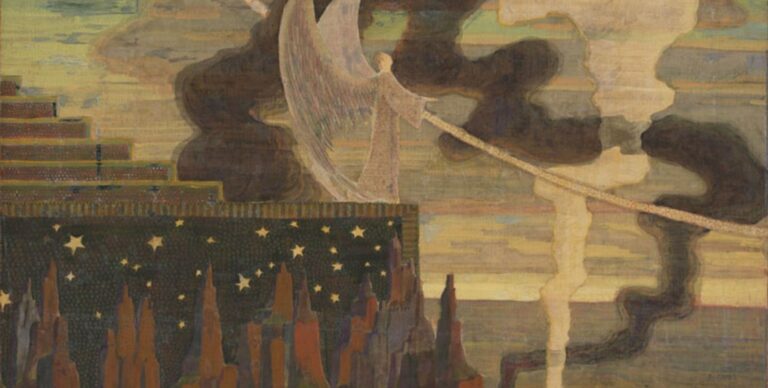Ingredients (serves 4 people):
- 400 grams of barley flour;
- a glass of almond milk (you know the drill);
- 50 grams of butter;
- half a litre of chicken stock;
- a pinch of white pepper;
- salt.
Recipe:
Melt the butter in a pan, warm the almond milk on the side and then pour the barley flour with the butter, while diluting it little by little with the warm milk. Beware not to allow lumps. The fire needs to be super-low, and you need to be super-careful.
Little by little, add the chicken broth too, while continuing to stir. Eventually, when you’re out of everything, continue stirring until the mixture starts boiling, add the salt and the pepper, and pour it into a large pan. Make sure it isn’t thicker than one centimetre. Finish cooking it in a very hot oven, the hotter the better: ten minutes should suffice.
Barley
Barley is a major cereal grown in temperate climates, and one of the main characters in the history of civilization. It was one of the first domesticated grains, though early traces of its consumption date back to 23,000 BC. Barley beer was probably one of the first alcoholic drinks developed during the Neolithic, so you can imagine it’s a plant very dear to my heart.
In Ancient Egypt, barley was connected with Orisis and his cycle of death and resurrection, as I have briefly highlighted here: it was believed to sprout from the body of the god himself, who granted food to his worshippers through his own sacrifice and his very body. If you’re seeing similarities with the Christian mystery of Eucarestia, where the bread is recurrently believed to turn into the body of Christ, it’s because there is.
A similarity was seen between the murder of Osiris and the scything down of the grain and its trampling: since his murderer Seth was represented as a hippo, later legends often render this parallel explicit. The seed sprouting begins the next agricultural cycle, and it was celebrated as a resurrection for the same god. Annual festivals saw the manufacturing of corn mummies, miniature figures of Osiris filled with mud and seeds: these figurines were planted in sacred areas and watered till they sprouted.
This renewal was possible thanks to two forces: the wisdom and determination of Isis, goddess of magic, and the life-giving waters of the Nile. The latter was embodied by the ancient deity Hapy, called the Lord of Fishes, the one “who greens the Two Banks,” and “the maker of barley and wheat” since his waters were credited with reviving Osiris.
In Ancient Greece, barley was sacred to Demeter and, as Homer reminds us, it was customary to offer the goddess a drink made of barley and mint (for the relationship between her and this plant, please refer to yesterday’s post): the drink was known as kykeon, in Eleusi where the goddess’ mysteries resided, and scholars debate whether this barley was fermented or not. I prefer to think it was.
Also, if you want to know more about Demeter, her mysteries and Minthe too, I recommend you read Ioanna Papadopoulou‘s Winter Harvest: I reviewed it here.
Barley is also a dominant element in Indian scriptures such as the Rigveda.






No Comments